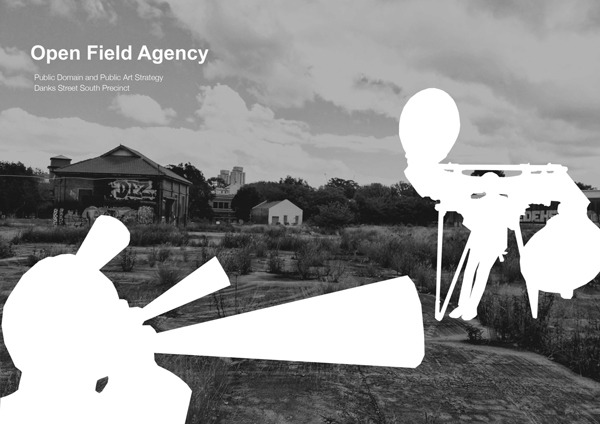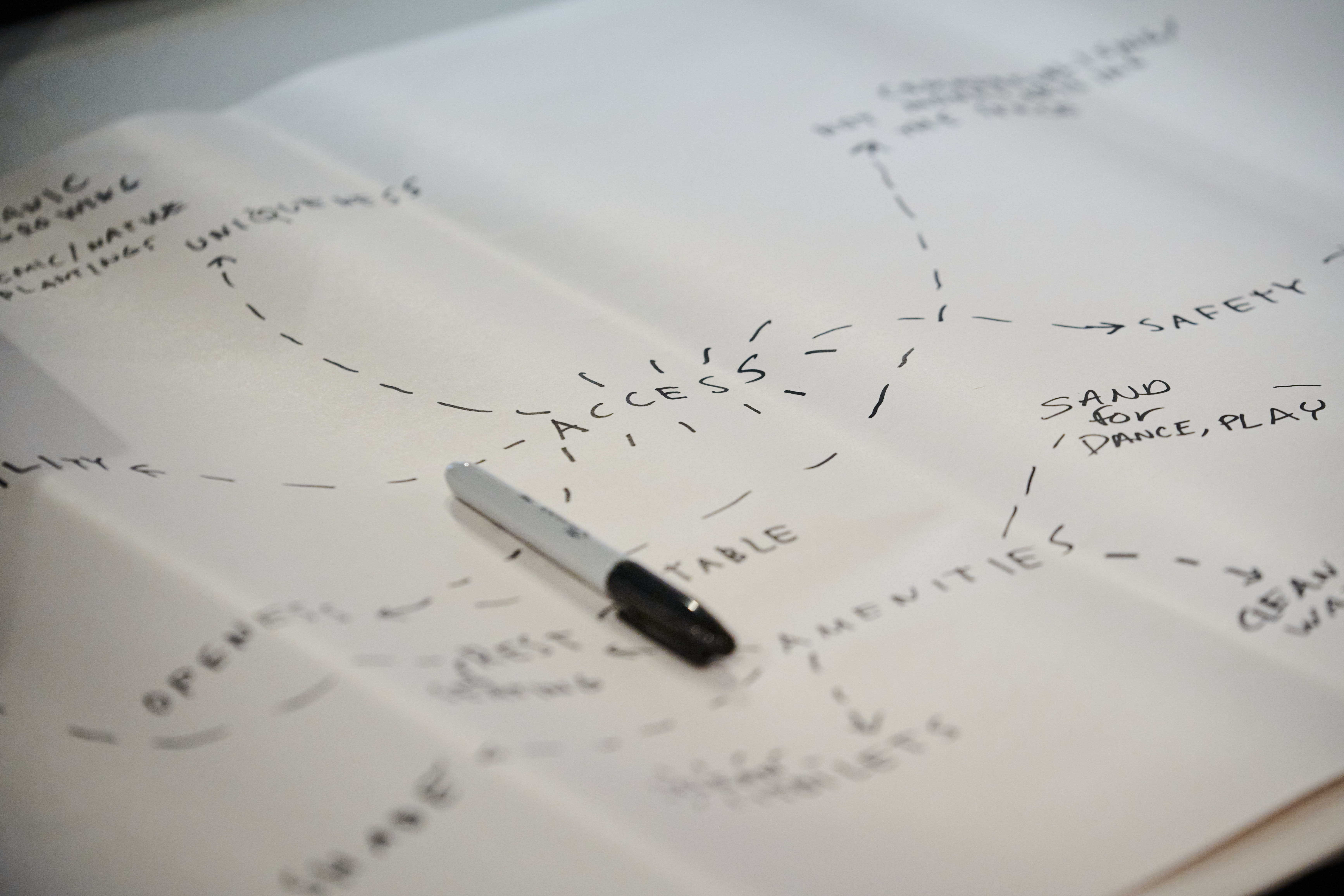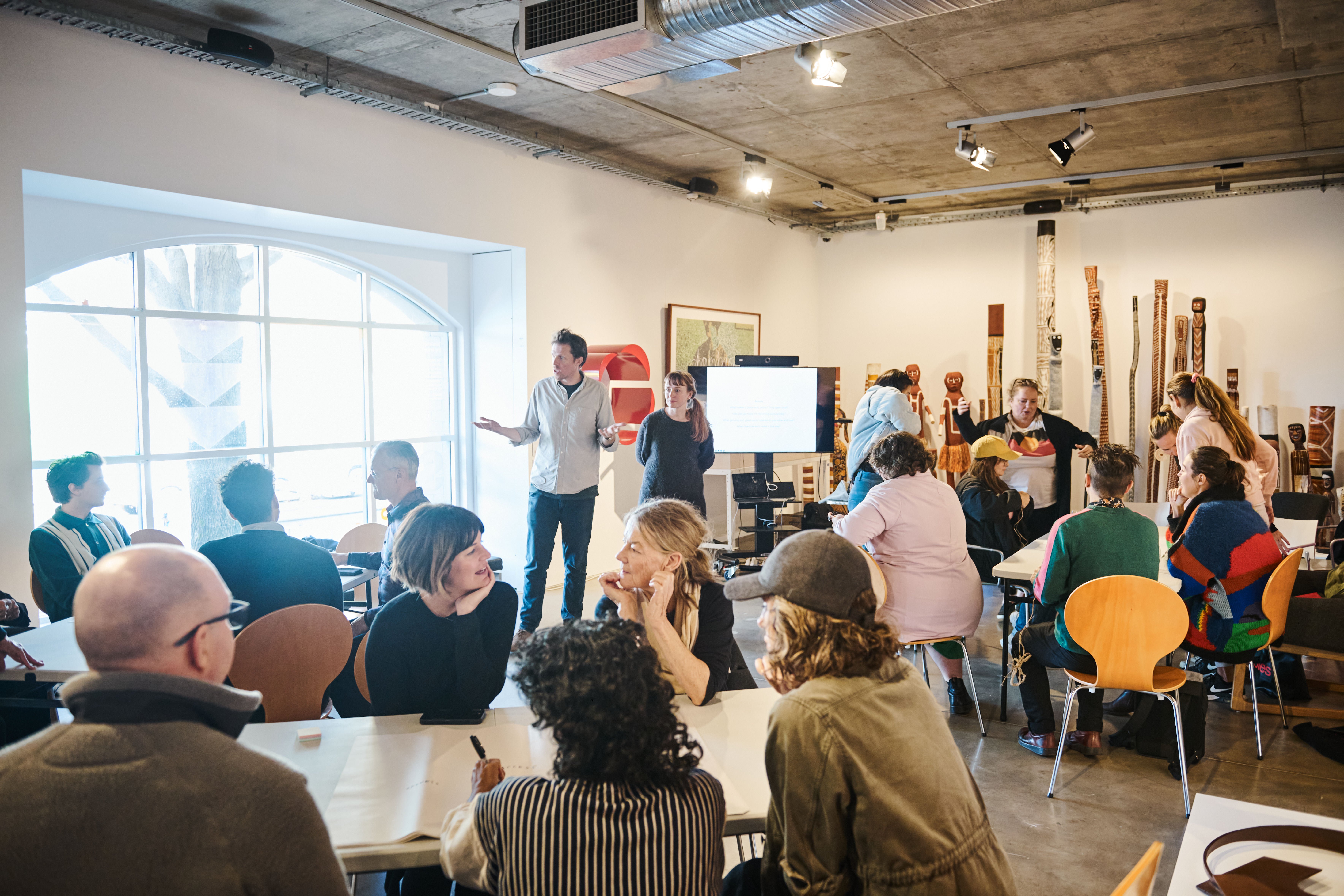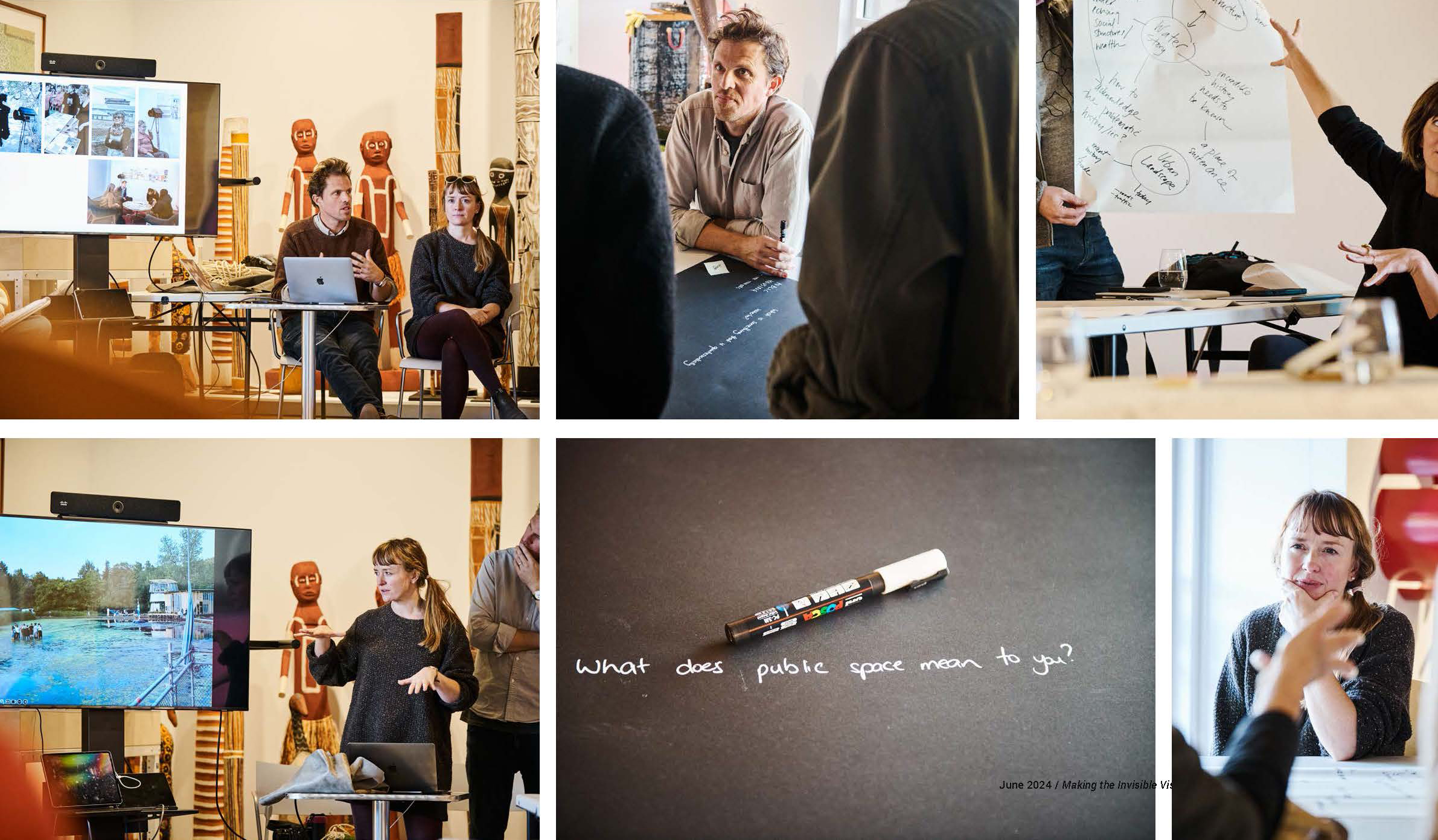Open Field Agency: Public Art Strategy + Residency infrastructure
2017 - circa 2030...
Durational artist and community led city making. From high level concepts for Public Domain of the Dank Street South Precinct in Waterloo to delivering durational public art as a form of living maintenance.
We acknowledge the Gadi people of the Eora nation as the traditional owner of the land and that sovereignty was never ceded. We pay our respects to their elders past and present, as well as to those of other Indigenous nations who continue to live in and look after this place.
Part 1. Beginnings 2017 - 2019.
In late 2016 we were commissioned by the City of Sydney to creatively engage with community surrrounding the Dank Street South Precinct so that their stories, values and ideas could help shape the future public spaces to be developed. While in typical development processes, this kind of community engagement happens towards the end of the design process, here the City was trialling a new approach, artist and community led process prior to any official masterplan.
Read > Tending to the open field. The art of maintaining publicness. Architecture Bulletin.
Getting started we asked... Who decides how public space is made? Who is ‘the public' it is made for? Could the many different publics who are connected to a place come together and share in its making?
The Danks Street South precinct is an area of Waterloo bordered by Danks, Young, McEvoy and Bourke Streets. The site is most easily identified by the large concrete open field surrounding the Sydney Water Pumping Station and Valve House still in operation in the south-eastern corner of the precinct. In addition to this many existing commercial and industrial buildings are still in use at the precinct’s northern end.
Like a lot of places in the area, this place about to change. A lot of new buildings will be built, mostly this will be private space, places where people will live or work: houses, shops and offices. But for the first time in generations, part of this site will be open to everyone. A place that is not for sale or for rent. A place anyone can go. A public place.
Bringing together the voices of local residents, community organisations, traditional owners, businesses, property developers, land owners, local government, planners, architects and artists, demanded a deep immersion in the politics of public space. Out of which we hope a new public space will emerge which is inclusive, useful, beautiful and unique.
As the first step in creating a vision for the public spaces of this site, we spoke with the community surrounding the Danks Street South Precinct so that local peoples’ stories, values and ideas could help shape the future public spaces to be developed.
We conducted an open research week based at Artbank on Young street in Waterloo. We met with 64 individuals by appointment and drop in. The majority of these meetings took place at Artbank or on the footpath by the site, with the remainder at Ron Williams Centre, NCIE, Redfern Community Centre, Yui Ming Temple and cafes in Redfern to Zetland.
The people we spoke to were generous with their memories, insights, ideas and recommendations for the site. We were given a wealth of ideas, reflections and suggestions. As clear as the diversity of desires and perspectives was the fact that we had barely scratched the surface.
As such we believe it would be a huge mistake to simply take what we have found and attempt to turn it into some kind of frozen-in-time representation of this place and its people.
So rather than presenting a catalogue of desires from which we pick and choose we present our findings as a set of fundamental desires, those which cut across the conflicts and locate a common base from which to build a set of concepts.
This film compiled by Nat Kelly captures snippets of conversations we had with people who live, work, love and know this place.
The Open Field Agency Public Domain and Public Art Strategy builds on these encounters to develop the fundamental principles of ‘openness’ that must be preserved in the development and eventual occupation of this important area in genuine partnership between local people, community groups, developers, land owners and council. We take these not as ‘options’ but as mandatory guiding principles, and measures against the concepts and eventual physical results will be judged.

Site investigations.
In 2019 for the first time in a century, we worked together with Sydney Water to open up the area to the public and offer free public tours of the site.

Aerial photographs of the site from 1930 - 2018 illustrating how the site has changed over time.
Part 2: Collaborative masterplan 2020 - 2023
In 2020 and 2021 we worked with Jane Irwin Landscape Architects and Bangawarra to develop the concept designs of the public domain. We proposed that this initial research be the basis for formulating an ongoing strategy for the development in this place. Our involvement is to help bring the communities’ aspirations into the process for the future public space, so we are guided by what we learned during the initial phase and remain open to further conversations and input.
5 separate landowners and industrial strata units privately own land in this precinct. Our task together with the design team was to ensure that when future development takes place, well-designed and quality open spaces are available, as well as an ongoing public art program and to embed pockets of rewilded landscapes.
In late 2020 the City of Sydney sought community feedback on the concept designs for the Dank Street South Precinct public domain plan through the participatory social pin point platform. The outcome of this work was published by the City of Sydney in the Danks Street South Precinct Concept Design in April 2023.
A central concept which emerged from all of this research and many conversations was the need for public art to be reframed as a living thing. Not a static plonked in work, disconnected from the people around it, once the development was complete. We proposed to create an infrastructure and program to support residencies to take place prior, during and after development. At first this was referred to as the ‘Caretaker Residencies’ though later ditched due to the colonial connotations of this name.
Part 3: Redefining public art in private development 2024 - 2027
The Open Field Agency is an artist-led experiment in delivering public art over time within private development through durational residencies. It is public art reframed as a slow, incremental process of making a place more public.
In 2024 MAPA was engaged by the Australian property developer DASCO to design and build the Open Field Agency Residency infrastructure which has been completed in September 2025. We are designing and curating a residency program for which will take place over 2026 and 2027 within the construction site of the Danks Street South Precinct.





Workshop on the Open Field Agency 2024- Artbank. Photos by Joshua Morris, courtesy of UAP.
The Open Field Agency will hosts artists, scientists, architects, carers, historians, performers, researchers, students and others in a residency space. The task of Open Field Agents is to tend to the openness of this place. Its’ social and spatial openness through their own work, research, conversations and creations.
Following an intensive period of design led by architect Hugo Moline and the build supported by the University of Newcastle, the residency infrastructure is complete and ready for the programming to commence. The property developer Dasco has committed some funds towards the operations of the residency program and we are seeking futher grant funds to boost artist fees and provide additional support to residents.
Announcing the Field Rooms for the Open Field Agency.
 Field Rooms workshop/performance space and studio nearing completion. September 2025. Photograph by Katrina Lee Ford
Field Rooms workshop/performance space and studio nearing completion. September 2025. Photograph by Katrina Lee Ford
Architect. Hugo Moline
Artist + Curator. Heidi Axelsen
Design assist. Peter Begg
Engineer. Brushwood Engineers
Builder. Grant Robinson
Install team. Peter Begg, Hurricane Bestman, Denham Callanan, Simon Muigg.
University of Newcastle technical team: Tom Condurso, Ethan Cranfield, Max Doran, Oscar Smith
Prefabrication team: Farhat Parviz, Kiconco Kushaba, Wanqing Luo, Trishna Chantal, Gizelle McKinnon, Emma Hayes, Alicia Hill,Alistair Eglinton, Maria Garcia Sanchez, Blanca Villabrille de Travy.
Client liaison. Urban Art Projects
Client. Dasco
Original commissioner. City of Sydney
Thank you
We would like to extend our deep thanks to all the individuals who took the time to meet with us and share their knowledge, stories, ideas and understanding of this place and for whom it is special and important place.
We would also like to thank the following organisations who have also contributed to the process:
Artbank
Arcadia
Bangawarra
Counterpoint Connect
City West Housing
City of Sydney
DASCO
DAHUA
Friendship Bridge
Future Method
Kepos St Community Centre
NCIE
Redfern Community Centre
We Live Here
WEAVE
Wyanga Elders
Yui Ming Temple
Urban Art Projects
Univeristy of Newcastle.

